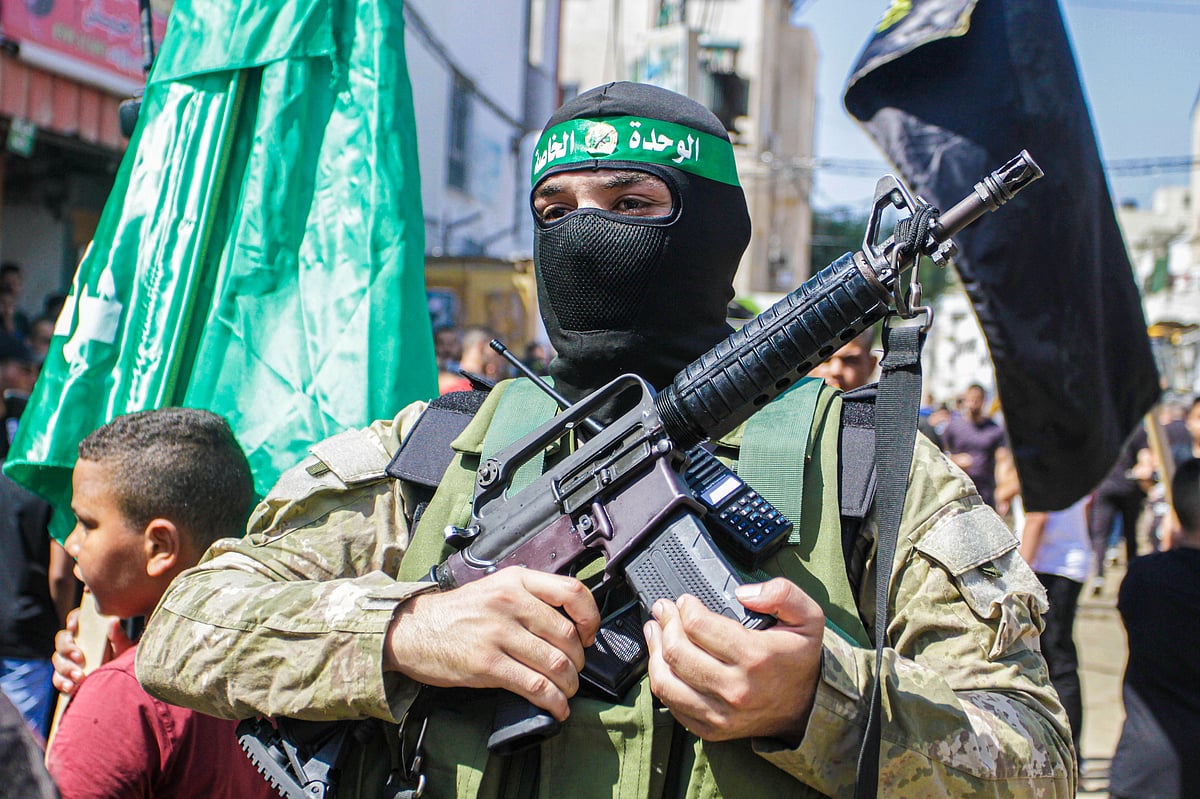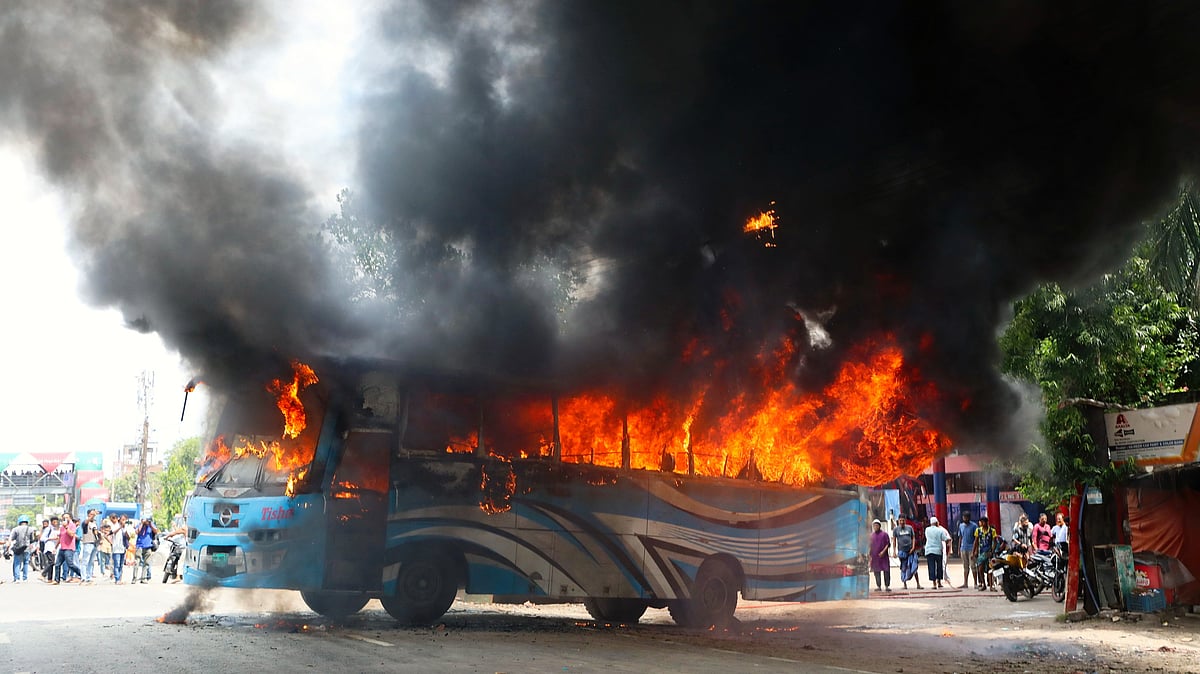Everyone loves a good war: 10 conflicts worrying to India as 2023 draws to a close
G20 Summit and photo-ops, hugs and handshakes, resolutions and high-sounding statements have failed to stop conflicts, civil war, insurgencies, and acts of naked aggression

At the beginning of 2023, experts expected an Israeli strike on Iran’s nuclear facilities, tension between the US and China over the latter’s designs on Taiwan, an escalation in the South China Sea, and the collapse of Russia in the wake of the Ukraine war. North Korea stepping up its nuclear weapons testing, and the Ukraine war spilling out into the region were the other worries that experts pontificated upon, besides the ‘real possibility’ of massive cyber attacks on US critical facilities.
As 2023 draws to a close, many of those fears have turned out to be unfounded. The US and China are engaged in talks to ease tension, and China has shown no inclination to gobble up Taiwan just yet. New flash points have emerged in Palestine, the Persian Gulf, and the Red Sea, while the world turned away from finding political solutions to strife in Ukraine, Myanmar, Syria and multiple countries in Africa engaged in deadly civil wars.
This past week itself has been marked by an escalation of violence that holds out the threat of a major regional conflagrations in West Asia and the Indian Ocean region:
This week, Israel was accused of assassinating a senior Islamic Revolutionary Guards (IRG) corps commander in an airstrike in a suburb of the Syrian capital Damascus. While Israel refused to comment, the IRG vowed to avenge the killing.
US President Joe Biden ordered airstrikes against facilities used by pro-Iranian Kataib Hezbollah militia fighters in Iraq that the US accused of using a drone to attack Erbil air base.
India moved warships to the Arabian Sea as the geographic footprint of instability stretched toward India after an Israeli-owned chemical tanker in the Indian Ocean was struck by drones allegedly fired by Iran-backed militias.

Here is a list of 10 festering conflicts and emerging flashpoints that continue at the end of 2023 and threaten to cast their shadows on 2024:
1. War in Ukraine: The war in Ukraine will complete two years on 23 February 2024. There is growing likelihood of the US and NATO suffering a ‘humiliating defeat’, with Russia’s foreign intelligence chief explicitly warning the US that continued Western support for Ukraine would turn the conflict into a “second Vietnam”. Sanctions against Russia by the West, meant to weaken it, have pushed the Russian bear to embrace the Chinese dragon. A new world order is emerging as the influence of the West declines, with far-reaching effects on global politics and economies.
2. Israel-Hamas war: The destruction of Gaza by Israel, and incessant airstrikes and crimes against humanity in Palestine since 7 October, have ironically made Hamas stronger and Israel more insecure and less safe. Israel's messianic zeal to destroy Hamas through ethnic cleansing in Palestine, and its refusal to accept the two-state solution, has actually helped Hamas emerge as the acceptable voice of Palestine and Palestinians. Support for the group has grown in the Arab world, and Israel finds itself losing sympathy internationally.
The misadventure will continue to reverberate in 2024. Israel and Israelis will almost certainly come under attack, economic boycott, and isolation. The US has lost its moral high ground by supporting Israel, and will increasingly be taken less seriously by the rest of the world. The failure of the UN to stop the genocide in Gaza and protect its own humanitarian staff and workers has raised fresh questions about the body’s utility and effectiveness.

3. Persian Gulf and Red Sea: The Red Sea is flanked by Yemen and Saudi Arabia to the east and Eritrea, Sudan, and Egypt to the west. It feeds into the Suez Canal, which belongs to Egypt and borders Israel. The potential for disruption in the canal, which offers the shortest sea route between Europe and Asia, was demonstrated in 2021 when a ship got stuck across its breadth, disrupting global supply chains.
The US has put up a coalition of the willing to ensure maritime safety in the Persian Gulf and Red Sea following drone attacks by Iran-backed Houthis in Yemen on an Israeli ship. But the only two regional countries which agreed to join the coalition in December were Bahrain and Seychelles. Bahrain is home to the US Navy’s Fifth Fleet in the Gulf and its Central Command, while Seychelles has a US Air Force drone base and an Indian naval base.
Will the coalition make ships in the Persian Gulf safe? A series of attacks this month raised serious doubts. With Israel reportedly planning to deploy its submarines east of the canal, the Houthis have an old score to settle for Israel’s covert interventions in Yemen’s civil war. Houthi support for the rights of Palestinians and refusal to normalise relations with Israel have added to the complexity.
4. Bangladesh: The extraordinary interest taken by the US in the general elections in Bangladesh due on 7 January is a pointer to how the region is becoming the playground of super powers. The US has been bluntly and openly supporting the opposition BNP and Jamat-e-Islami in Bangladesh, both parties viewed with suspicion by India.

In an extraordinary instance of interference in another country’s internal affairs, the US has been demanding that elections be held under a caretaker government and an independent body ‘transparently and fairly’.
The deepening footprints of China and its investment in infrastructure and defence in Bangladesh worry both US and India. China's increasing naval clout in Bangladesh's maritime backyard also explains the US bluntness. Back in 2021, China's ambassador to Bangladesh, Li Jiming, had warned Dhaka not to join the Indo-Pacific Quad.
At the same time, visits by Russian warships to the Indian Ocean have increased and in September, Sergey Lavrov became the first Russian foreign minister to visit Bangladesh and in November, three Russian warships docked in the country. The situation remains fraught and volatile.
5. Myanmar civil war: The civil war in the country of 54 million has been raging since May 2021 after the military junta staged another coup and overthrew the elected government. Most governments in the region have happily collaborated with the junta, while indications are that some of the super powers are secretly arming the ethnic armies and egging them on to resist the junta.
The outgoing year saw ethnic militias hitting the junta hard, forcing some Myanmarese army soldiers to seek shelter in bordering areas of India. The region is a tinder box and could easily go up in flames in 2024.
6. Chinese aggression: The People’s Republic of China has shown no inclination of using force against Taiwan, and while it has consolidated its bases and infrastructure along its borders with India, there does not appear to be an imminent threat of a ‘two-front war’.
Conflicting statements by Indian military and political leaders — who variously maintain that China is sitting over 2,500 sq km of Indian territory in Ladakh, that it is sitting on no-man’s land and finally, that 20 rounds of talks between Indian and Chinese military commanders in Ladakh have failed to settle the ‘dispute’ — have confounded confusion.
India, however, has been drawn into an anti-China coalition led by the US, with no benefits in sight. It is wishful thinking, say experts, for India to catch up with China economically or militarily anytime soon. By aligning with the US at a time when China and Russia are getting closer, India has seemingly surrendered its autonomous capability to take strategic decisions, keeping the border disputes and rivalry alive.
7. Pakistan in turmoil: Instability in Pakistan, hold experts, is a threat to India. India’s western neighbour is going through a political and economic crisis and faces a strategic dilemma on Kashmir following the Indian Supreme Court’s ruling on the accession of Kashmir and holding the abrogation of Article 370 as valid. With no effort being made to normalise relations and resume border trade and with militancy — sponsored by Pakistan or not — in Kashmir on the rise, the western border of India remains a potential flashpoint.

8. Insurgency, instability in Afghanistan: While the US military withdrew from Afghanistan in August, 2021, ending its 20-year ‘war on terror’ — and the world promptly forgot about the humanitarian crisis as the war moved to Ukraine — consolidation of power by the Taliban, and insurgent attacks and the presence of the ‘Islamic State of Khorasan’, Al Qaida etc. have contributed to internal strife, anarchy and instability. Given its location and geo-political significance in the region, this could blow up into a major conflict anytime.
9. Yemen: A proxy war between a Saudi Arabia-led military coalition and Iran-backed Houthi rebels has been raging since 2014 in one of the poorest countries of the world. The Saudis support the government of Rashad al-Alimi, who took over as the country’s president in 2022, while Iran backs the challenger Mahdi-al-Mashat, head of the ‘Supreme Political Council’ of the Houthis.
Millions have been displaced and the Houthis pose a threat to maritime safety in the Persian Gulf region, a threat which prompted PM Narendra Modi to speed dial Saudi Arabia’s crown prince Mohammed bin Salman.
10. Syrian crisis: The civil uprising against President Bashar al-Assad in 2011 triggered the exodus of 12 million refugees and pulled Iran, Russia, Turkey, the Hezbollah in Lebanon and, of course, the US into its net. Islamist militant groups like Al-Qaeda and Islamic State, too, are active, while pro-Kurdish rebels in Syria have dragged in Turkey even as Russia backs Assad. Syria may have gone out of international news, but remains a conflict zone.
There are other conflict zones in Africa and central and South America and in the former Soviet Union that the world has by and large ignored. As many as 29 countries, it is estimated, are at war as 2023 draws to a close, including Sudan, Somalia, Ethiopia, Azerbaijan and Albania.
It is a sobering thought that we are still not too far from the outbreak of the third World War.
Follow us on: Facebook, Twitter, Google News, Instagram
Join our official telegram channel (@nationalherald) and stay updated with the latest headlines
